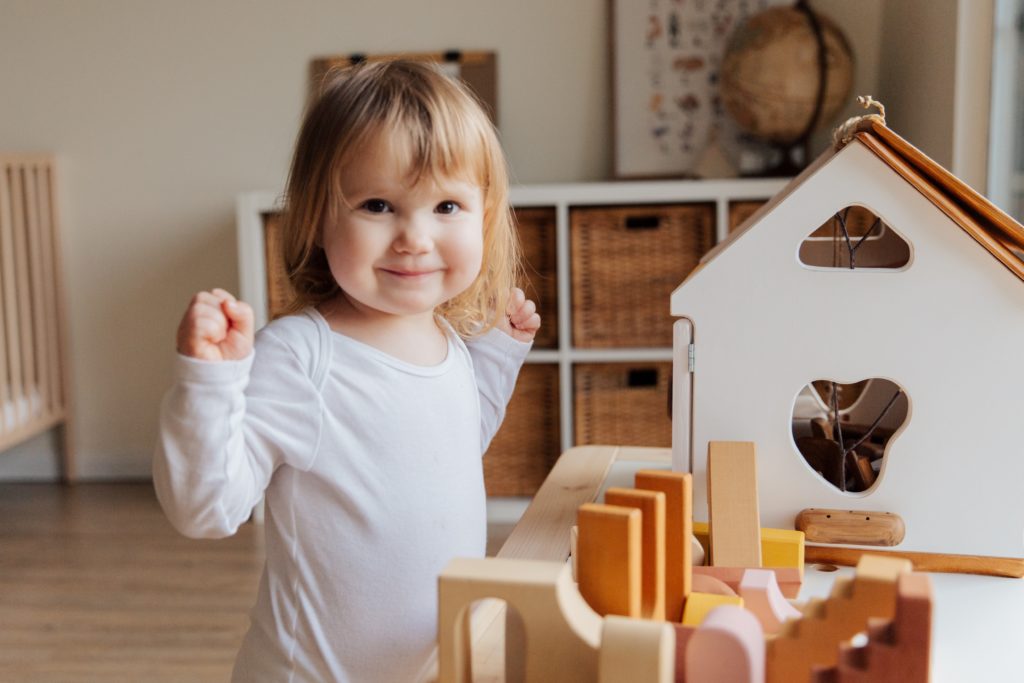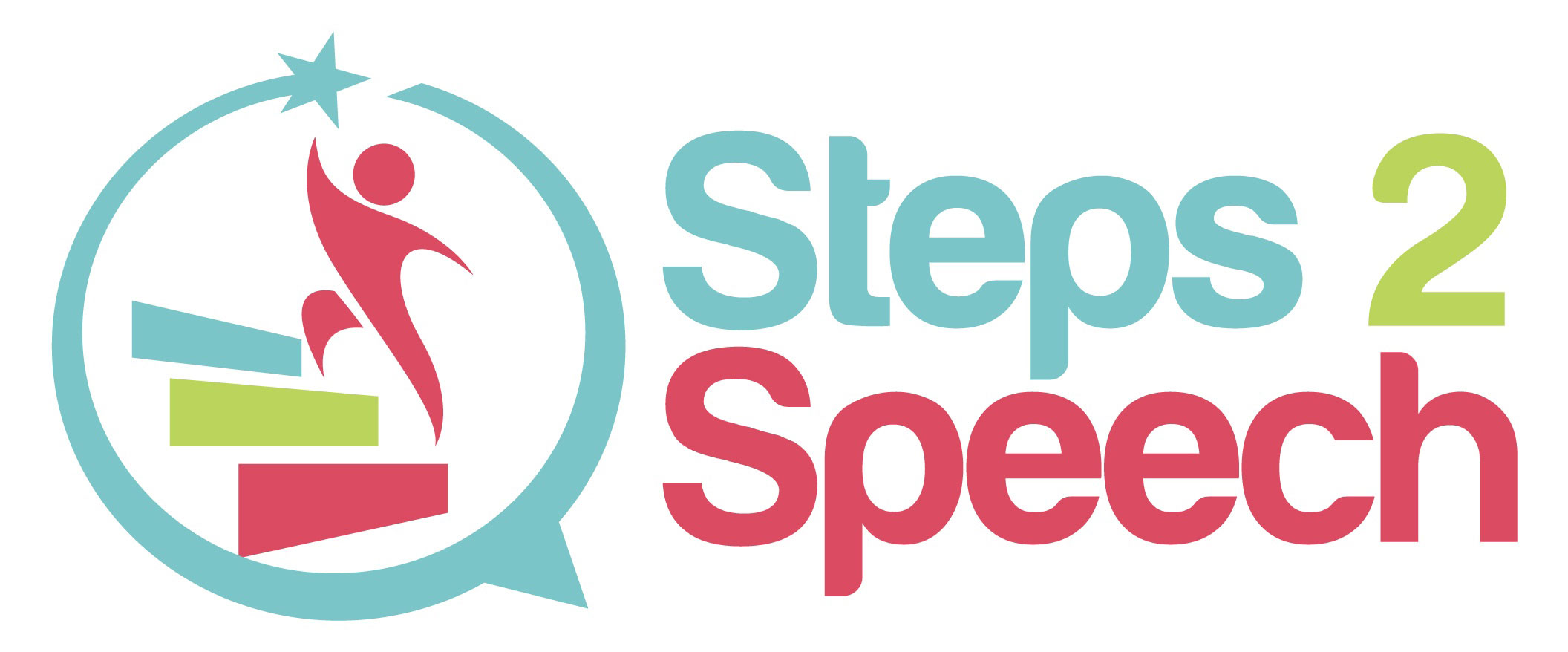EARLY INTERVENTION/BIRTH-3

The key to successful therapy for babies and toddlers is that it has to be child-centered and fun! I use a play-based approach, as play is the foundation for language development. Parents are always included in the therapy session and play a significant role in their child’s therapy. Parent coaching and training is an integral part of each session.
Prior to initiating an evaluation for speech and language, it is recommended that each child undergo an audiological evaluation to rule out hearing loss or middle ear problems, such as residual fluid behind the ear drum due to previous ear infection. If a child can’t hear the sounds, how do we expect her to imitate new sounds and words? Once cleared, we can evaluate speech and language skills through parent interview and checklists as well as direct observation of your child through an in person evaluation. Once we have identified your child’s current level of functioning, we can begin to create a treatment plan.
When evaluating a baby or toddler, we assess four areas of language development; social-interaction skills, receptive language, expressive language, and speech intelligibility. Each level is a building block for the next.
Social-Interaction Skills
Social-interaction skills refer to how well your child responds to and interacts with other people. This interaction really starts on the day your child is born as s/he begins to take in and respond to environmental stimuli, respond to and recognize familiar faces, and even gives that first social smile somewhere around 4-6 weeks of age. We want to see that a child can engage with new people, making eye contact not only with the parents but with people outside of the family. We want to see your child connecting with you, smiling, listening and attending to talking, and interested in people. A child should be pointing and leading you prior to starting to talk. Without this social-engagement, communication skills will not develop as they should.
Receptive Language
Receptive language is how well a child understands the words he hears. Children must understand words before they use them to communicate. When evaluating receptive language we look at things like how well your child can follow simple directions in everyday routines and respond to simple questions. Typically developing toddlers can follow a variety of simple commands by 18 months. If we are not seeing these skills, we cannot expect that expressive language will be developing yet. The ability to understand words and follow directions comes before talking. Receptive language is linked to cognitive skills, which are the core skills our brain uses to think, learn, remember, reason and attend.
Expressive Language
Expressive language is anything a child can express. This might be pointing, gestures, or facial expressions, for example. Expressive communication is being able to express needs or ideas and may take on many forms before true words come in. Typically, we see babbling develop around 4-6 months of age, and this is an important form of “speech practice” that leads to eventual production of words. A typically developing baby will also use some non-verbal play sounds at around 6 months. This may include things like fake coughing or “raspberries”. In the very beginning of expressive language development and before we see imitation of sounds and words, a baby or toddler will purposefully imitate actions with objects such as copying what you do with a toy. Imitation of actions with objects and use of gestures such as waving or pointing are very important steps in the development of expressive language. These early gestures are an excellent indicator of communication development. Research indicates that the development of gestures between 9 and 16 months predicts language ability two years later and a child should be using 16 different gestures by 16 months. A child’s imitation skills at 18 months of age is the biggest predictor of his language development at age 3. Examples of these gestures would be waving, pointing, nodding yes or shaking the head no, raising arms to be picked up, and clapping. For more information about the communication milestones to expect at 16 months, visit the First Words Project.
With all of these prerequisites in place, and when a child moves closer to his first birthday, he will continue to imitate new actions and gestures, as well as new sounds and eventually we hear first words right around 12 months. For some children, this might happen as early as 9 months or later at around 16 months. But by 18 months, your child should be using several words consistently. By age 2, a child should be saying at least 50 words, and many will be combining 2-3 words at this time.
If you are a new parent who is unsure of what to expect at each stage of development, or unsure if your child’s development is on track, I am also available for consultation to discuss milestones and red flags to look for in the first 12-18 months of your child’s life.
Speech Intelligibility
Speech intelligibility refers to how well you can understand what a child is saying. It is not a first priority when looking at the speech and language skills of a toddler. Without expressive language skills in place, we cannot begin to work on speech intelligibility. There are some early error patterns that are very typical of children just developing speech, such as leaving out consonants or endings of words, distorting sounds or substituting one sound for another. A general guideline is that a 2 year old child should be approximately 50% intelligible to a stranger. At age 3, a child should be about 75% intelligible to a stranger and 90% intelligible to a parent. We expect a certain level of development with respect to vocabulary and expressive language, namely that a child is using multi-word phrases consistently, before working on speech intelligibility.
Language development should be looked at as a hierarchy, with social-interaction happening first, which leads to the development of receptive language and cognition, followed by expressive language and then eventually, intelligible speech.
When Should I Be Concerned
While it is true that some children develop skills slightly later or at a slightly slower pace than what is typically expected, there are certain milestones that we expect to see by certain ages. When we do not see these skills, these are considered “red flags” in communication development. The presence of any of the following red flags warrants a discussion with your pediatrician and a speech-language pathologist.
- Your baby does not look toward sounds by 6 months.
- No eye contact with a caregiver or adult by 6 months. This normally happens in the first 2-3 months.
- No big smiles, laughing, or joyful expressions during interactions by 6 months.
- No back and forth sharing of smiles, sounds, or other facial expressions by 9 months. (For example, fake coughing back and forth)
- Limited or no babbling at 9 months.
- No gestures or back and forth, such as pointing, showing, reaching or waving by 12 months. (Joint attention skills)
- No consistent responding to name by 12 months.
- Does not respond to “No” and “Bye-bye” by 15 months.
- No words by 16 months (Typically 15-25 words at 16 months; 50 words at 18 months)
- Does not follow simple and familiar directions by 18 months.
- Has a vocabulary of less than 50 words and not using two word phrases by 24 months.
- Does not use back and forth conversational turn-taking and cannot answer simple questions by 30 months.
- Any loss of speech-language, social skills or any regression.
Other concerns that might warrant a consult with a speech pathologist include:
- Your child is a very picky eater, can’t tolerate many textures or foods without gagging
- Your child uses repetitive or perseverative behaviors
- Your child drools excessively beyond 15-18 months of age
- Your child has been stuttering for longer than 6 months
The following are some additional resources for early intervention:
NJ Department of Health Early Intervention Services website provides information regarding services provided through the state of NJ. They can also be reached at 888-653-4463.
Books for parents of children with communication delays and disorders:
The Late Talker, What to Do If Your Child Isn’t Talking Yet
It Takes Two to Talk: A Practical Guide For Parents of Children With Language Delays
The Out-of-Sync Child: Recognizing and Coping with Sensory Processing Disorder
The Child With Special Needs: Encouraging Intellectual and Emotional Growth
